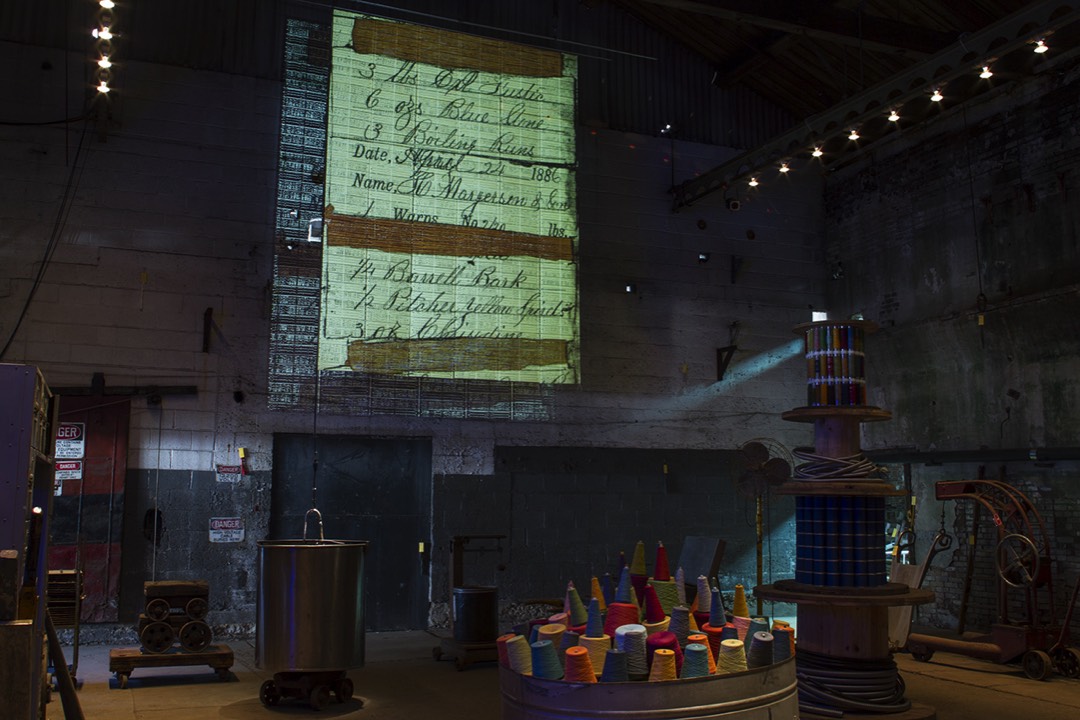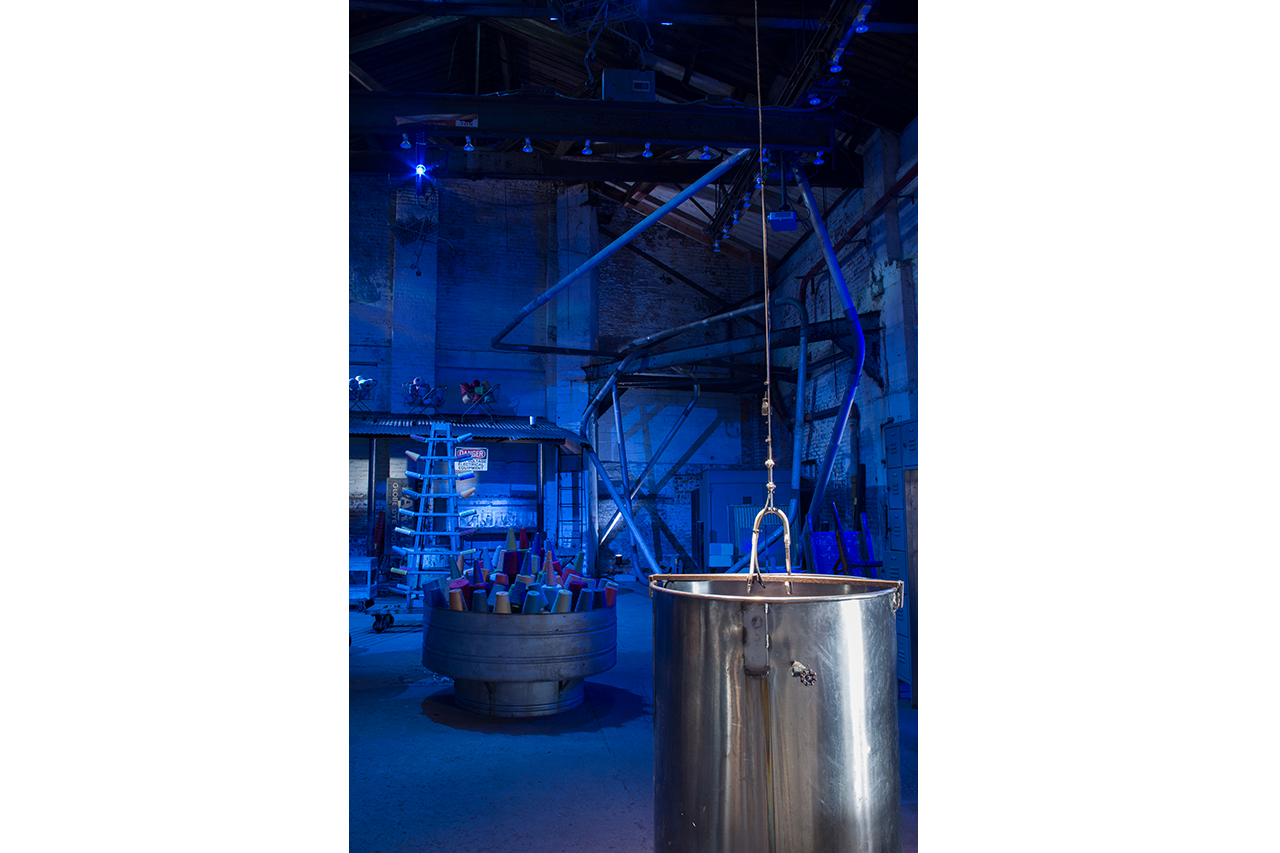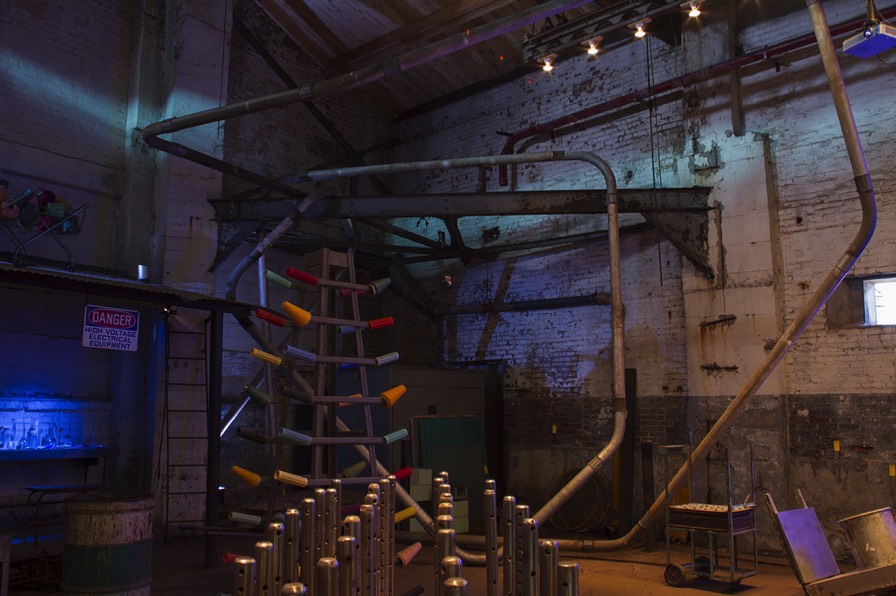"Indigo Hunting,” 2012, was part of a group show of installations, Catagenesis, located in the historic Globe Dye Works, Philadelphia, Pennsylvania. 38' x 55' x 30'.
Carolyn Healy: sculpture and lighting
John JH Phillips: audio and video.
Lorem ipsum dolor sit amet, sapien platea morbi dolor lacus nunc, nunc ullamcorper. Felis aliquet egestas vitae, nibh ante quis quis dolor sed mauris. Erat lectus sem ut lobortis, adipiscing ligula eleifend, sodales fringilla mattis dui nullam. Ac massa aliquet.
Working inside the relic of Globe Dye was fascinating on many levels. The architecture, stripped of activity, carries the poignancy of decline: textures of peeling paint, pipes that go nowhere, the stains of moss on the walls. The random assortment of objects left behind yields some odd or poetic associations and provided a glimpse into the work that went on here, prodding us to learn something of the company's history and the evolution of dyeing processes. We came away with deep admiration for the Greenwood family and the workers who dedicated themselves to quality for nearly 150 years.
In particular, the immense skill required to match colors, especially when working from non-standard samples provided by discriminating (and sometimes demanding) customers, resonates with us as visual artists. There is an intersection of physics and psychology we don't pretend to understand, but the difficulty of discerning small color differences, and the many variables that affect the way a color is perceived, such as light source, angle of viewing, size of the area observed, neighboring colors, and eye fatigue, are well within our experience. Part of Globe's reputation rested on extraordinary visual acuity—a "boss dyer" possessed knowledge of thousands of shades, hues and tones and despite the introduction of instruments and computers the human eye and brain remained critically important (all dyed yarn had to pass the "eye test" even after machines performed a scientific color match). It is this combination of human judgment and refinement of sensory perception, later coupled with technological ingenuity, that impresses us most.
We have riffed on this central challenge of color-matching by tagging objects and surfaces with some of the thousands of color-standard yarns found in the company files, using the sometimes fanciful names of those colors in the soundtrack, sequencing changes in overall illumination/mood of the space, and by circling round the iconic indigo trying to capture it in light. Richard Greenwood, founder of Globe, was considered a "vat doctor" and an expert in indigo—a color ill-defined by science but well known as a natural dyestuff used in some form in all traditional cultures and here in the early textile industry of America. One of our videos incorporates pages from an 1885 Globe dye-recipe and sample book in the collection of the Frankford Historical Society— it is projected on Jacquard loom pattern cards from the now silent Standard Tapestry mill, also founded here in Frankford and once a customer of Globe. We share these details to give a sense how our materials and ideas derive from what we encountered here, but we hope the sum of our efforts is greater than the parts.


